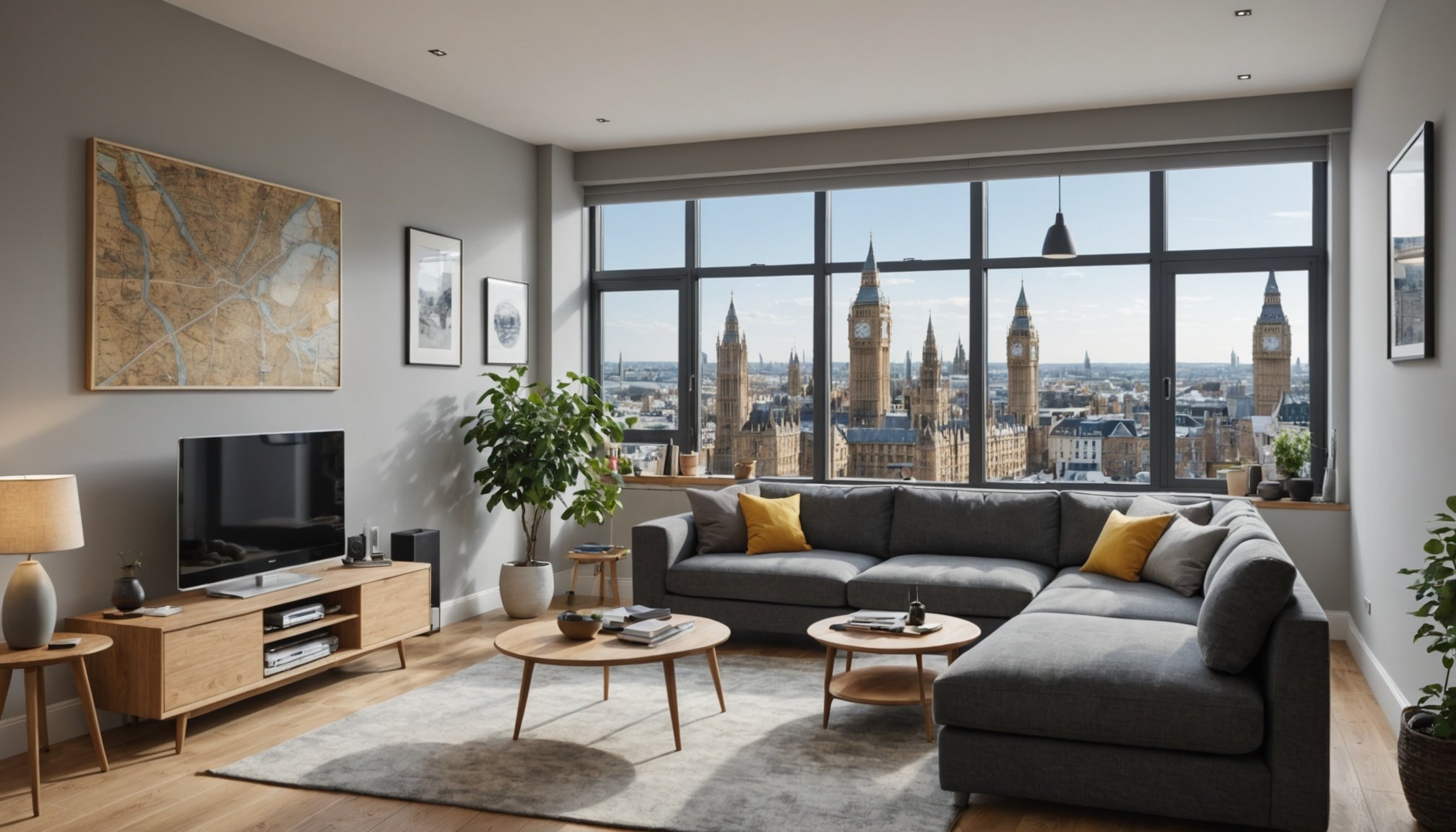Understanding Urban Noise Problems
In UK cities, urban noise is an inescapable aspect of city living and a significant contributor to sound pollution. Common sources include traffic, trains, construction, and nightlife activities. These diverse sounds converge into a cacophonous environment that manifests around the clock.
While the hustle and bustle of city living can be captivating, the consequences of prolonged exposure to sound pollution are noteworthy. Noise pollution affects mental health, often contributing to increased stress and anxiety levels. Physically, it can lead to sleep disturbances, cardiovascular issues, and impaired hearing over time.
A lire aussi : Essential Eco-Friendly Home Insulation Features for the UK: Your Ultimate Guide to Sustainable Choices
Statistical data highlights the severity of urban noise levels in major UK cities. London, as an example, consistently reports high decibel levels, surpassing World Health Organization guidelines. Similarly, Manchester and Birmingham experience persistent noise pollution, primarily from traffic and nightlife hotspots. These statistics underscore the necessity for interventions to mitigate the impact of sound pollution on urban residents.
Understanding the sources and effects of urban noise allows us to explore potential strategies to reduce its impact on urban dwellers. Soundproofing homes, creating green spaces, and imposing stricter regulations on nightlife activities are among the solutions that can alleviate the toll of sound pollution. This is essential for enhancing well-being and fostering healthier city living.
Sujet a lire : Discover the Best Color Schemes for a Warm and Inviting Cottage Living Room in the UK
Effective Soundproofing Techniques
Addressing the challenges of unwanted noise requires an understanding of various soundproofing methods. These can be broadly categorized into mass, damping, and decoupling. Each method serves a specific purpose in enhancing home insulation and noise reduction.
Mass involves adding dense material layers to surfaces, thus obstructing sound waves from passing through. Common materials include thick drywall or specialized soundproof panels. Increasing the mass of a wall can significantly minimise sound transmission.
Damping is about absorbing vibrational energy. This method uses compounds that convert sound energy into heat. Popular damping materials include viscoelastic compounds or acoustic sealants that fill gaps and prevent sound leakage.
Decoupling aims to separate two structures to disrupt the path that sound waves travel through. Double studs or staggered wall systems are frequently employed to achieve effective decoupling.
When debating acoustic treatment versus full soundproofing, it’s important to note that acoustic treatment optimizes the sound quality within a space, whereas full soundproofing focuses on blocking external noise entirely.
For those considering DIY projects, combining these techniques can be effective. However, professional help offers expertise and precision, especially for complex tasks such as decoupling or utilizing advanced materials. Thus, the choice between DIY and hiring a professional depends significantly on the nature and scale of the soundproofing effort.
Recommended Soundproofing Materials
Using soundproofing materials in your home or office can significantly enhance comfort and privacy. Here’s a detailed look at some of the most effective options available.
Soundproofing Boards
Soundproofing boards are an excellent choice for wall applications, offering advanced noise reduction. These boards consist of dense materials designed to absorb and block sound efficiently, thus preventing it from traveling through walls. They’re particularly useful in urban settings, where external noise can be a persistent issue. Installation is relatively straightforward, making them a practical solution for professionals and DIY enthusiasts alike.
Acoustic Foam
Acoustic foam is another effective option, particularly when it comes to enhancing sound absorption within a room. These foam panels effectively reduce echo and reverberation, improving audio clarity. Widely used in studios, they create an acoustically optimized environment. By altering reflections within a space, they inadvertently reduce background noise, facilitating clearer communication and recordings.
Double-Glazed Windows
Double-glazed windows provide a superb barrier against external noise. Consisting of two panes of glass with an air or gas-filled layer between them, this design greatly enhances insulation. Not only do they reduce noise significantly, but also improve energy efficiency, making them a favoured choice for eco-conscious homeowners. Although more costly than single-pane counterparts, the investment often pays off through reduced utility bills and increased property value.
Budget-Friendly Soundproofing Solutions
Improving your home’s sound environment doesn’t have to be expensive. There are affordable soundproofing strategies that can make a noticeable difference without draining your wallet. Start with cost-effective solutions like heavy curtains or rugs, which can absorb noise and contribute to a calmer atmosphere.
Heavy curtains are a simple addition. Made of dense materials, they can block sound from entering through windows. They also have the added benefit of improving insulation, which can reduce heating costs. For hard floors, plush rugs can serve a dual purpose by enhancing aesthetics while dampening sound.
When considering full-scale home improvement projects, evaluate the cost versus effectiveness of various soundproofing products. Some may offer premium prices without significantly boosting soundproofing. Focus on materials that are known for their sound absorption properties, like foam panels or acoustic tiles.
Prioritizing your soundproofing efforts is crucial. Identify the most troublesome areas in your home and tackle those first. This strategic approach allows you to distribute your budget wisely and achieve maximum noise reduction.
By concentrating on these cost-effective solutions, you’ll enhance your home’s comfort without incurring substantial expenses.
Local Resources and Professionals
When it comes to enhancing your home’s privacy and reducing noise, finding reputable soundproofing services is crucial. Start by exploring listings or directories dedicated to UK professionals. Engaging local experts ensures they are familiar with the area’s specific challenges and building regulations.
To locate soundproofing experts, consider asking for recommendations from neighbours or friends who have successfully completed similar projects. Online review platforms can also provide insight into the reputation and reliability of potential local contractors. Checking credentials and accreditations is essential to verify expertise.
Consulting with soundproofing professionals offers several benefits. Experts can assess your unique needs and suggest optimal solutions, helping to avoid costly errors. Their expertise in material choice and installation techniques ensures effective and durable results. Additionally, local experts can provide tailored advice on improving acoustic performance, considering your premises’ layout and acoustics.
Selecting quality products is key to successful soundproofing. Look for product suppliers known for specialising in high-quality soundproofing materials. A reliable supplier should offer a comprehensive range of materials like acoustic panels, insulation, or sealants, meeting British standards. Consulting with a professional can guide you to the best suppliers and ensure that your investments effectively contribute to a quieter, more serene environment.
Case Studies and Testimonials
Real-life soundproofing success stories provide valuable insights for those seeking urban living solutions. These customer experiences highlight challenges faced and the transformative effect soundproofing can have on quality of life.
Consider Tom, a resident of a bustling city centre, whose apartment was perpetually inundated with street noise. The persistent din affected his sleep and concentration. By installing soundproof windows and strategic placement of acoustic panels, he effectively reduced the outside noise intrusion. Tom’s solution enabled him to enjoy a more serene home environment, greatly improving his overall well-being.
Similarly, Sarah faced issues with noisy neighbours in her city block. Her soundproofing journey involved adding dense curtains and door seals, effectively minimizing incoming sound. This not only resulted in quieter living conditions but also allowed Sarah to pursue her home-based work without distractions, showcasing how urban living can be ameliorated with thoughtful interventions.
These soundproofing transformations demonstrate resilience in tackling urban noise challenges. Residents reported enhanced physical and mental health, reflecting the profound impact soundproofing can have on one’s quality of life. For urban dwellers, these stories serve as a testament to the benefits of soundproofing solutions, illustrating both practicality and effectiveness in real-world applications.











